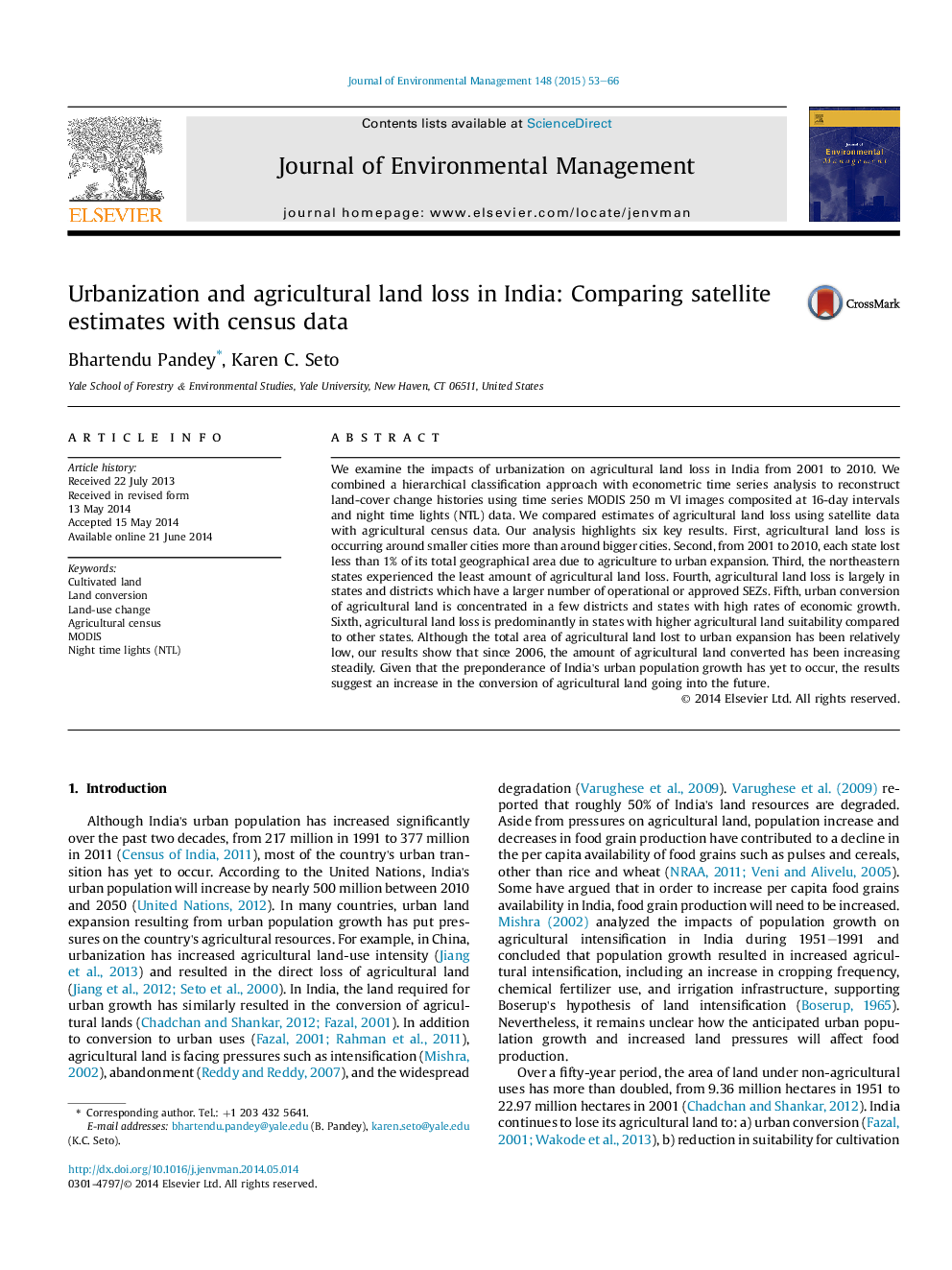| Article ID | Journal | Published Year | Pages | File Type |
|---|---|---|---|---|
| 1055688 | Journal of Environmental Management | 2015 | 14 Pages |
•We examined the urban conversion of agricultural lands (UCAL) in India from 2001 to 2010.•We used a hierarchical classification method and time-series analysis to identify location and timing of UCAL.•Results show that UCAL in India is greater in states where urbanization and economic growth are high.•Agricultural land loss in India is concentrated around smaller cities more than more bigger cities.•The total area under UCAL in India during the study period is relatively low but has been increasing since 2006.
We examine the impacts of urbanization on agricultural land loss in India from 2001 to 2010. We combined a hierarchical classification approach with econometric time series analysis to reconstruct land-cover change histories using time series MODIS 250 m VI images composited at 16-day intervals and night time lights (NTL) data. We compared estimates of agricultural land loss using satellite data with agricultural census data. Our analysis highlights six key results. First, agricultural land loss is occurring around smaller cities more than around bigger cities. Second, from 2001 to 2010, each state lost less than 1% of its total geographical area due to agriculture to urban expansion. Third, the northeastern states experienced the least amount of agricultural land loss. Fourth, agricultural land loss is largely in states and districts which have a larger number of operational or approved SEZs. Fifth, urban conversion of agricultural land is concentrated in a few districts and states with high rates of economic growth. Sixth, agricultural land loss is predominantly in states with higher agricultural land suitability compared to other states. Although the total area of agricultural land lost to urban expansion has been relatively low, our results show that since 2006, the amount of agricultural land converted has been increasing steadily. Given that the preponderance of India's urban population growth has yet to occur, the results suggest an increase in the conversion of agricultural land going into the future.
